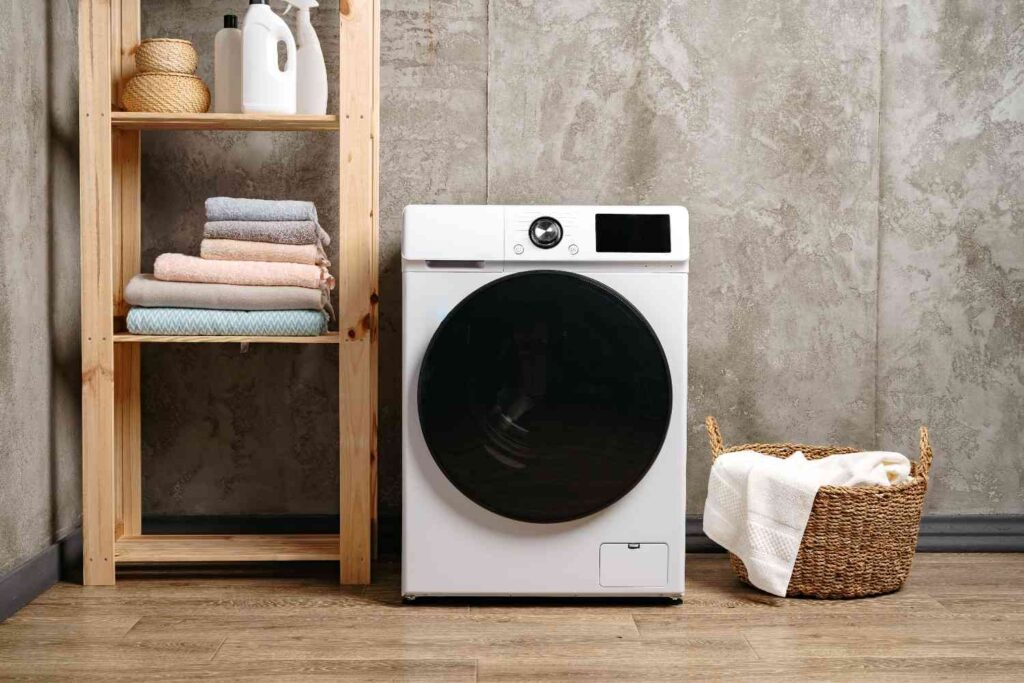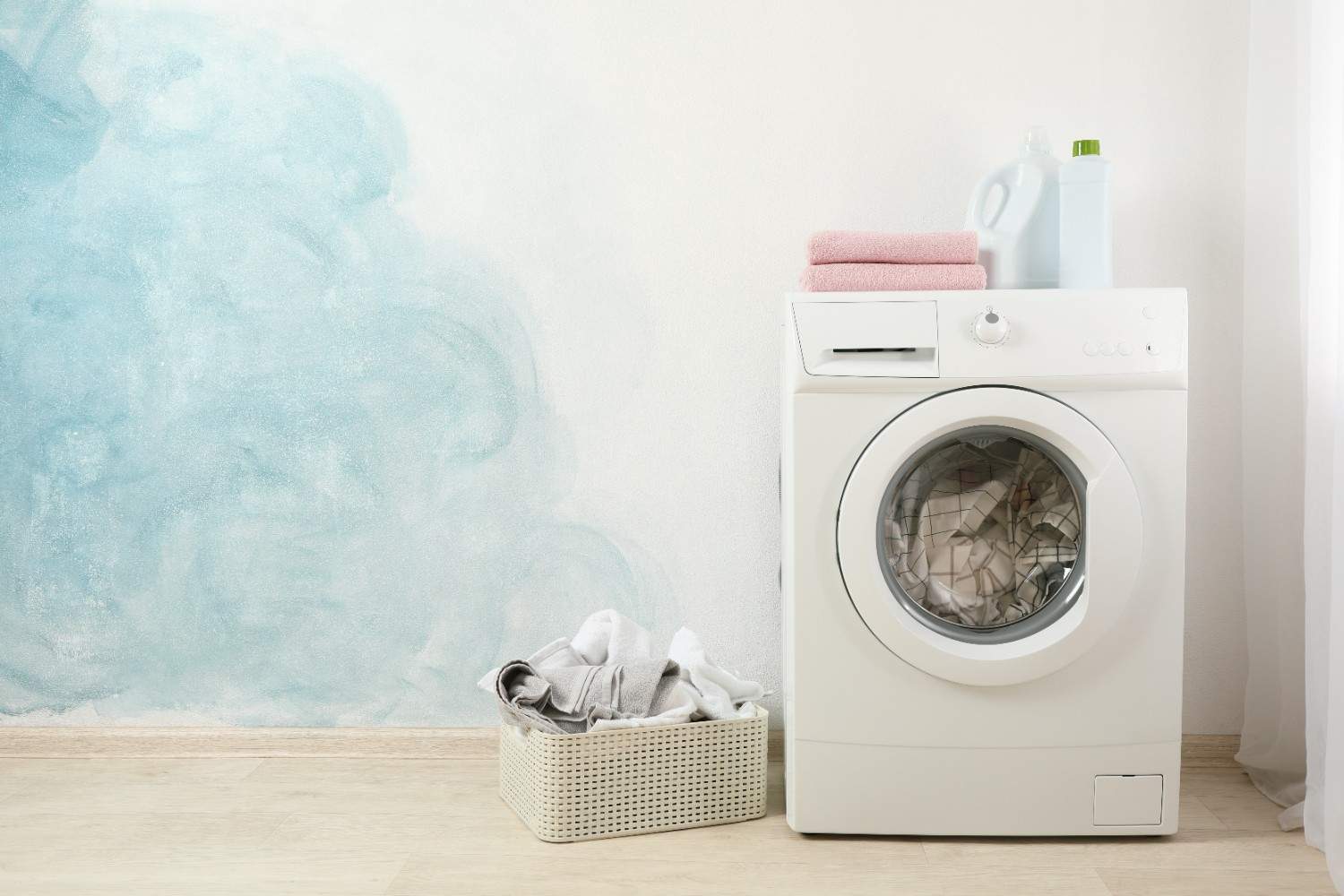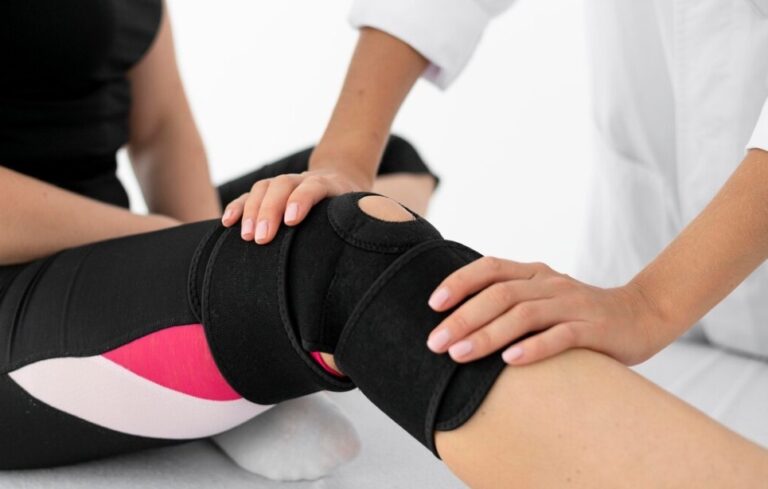I’ll admit it — the first time I tried to buy a stackable washer and dryer, I thought they were all the same size. I quickly learned that’s far from true. Between standard and compact models, clearance requirements, and the need for proper ventilation, stackable washer and dryer dimensions can make or break your laundry room setup.
So, if you’re planning to install a stacked unit or upgrade an old one, this guide will walk you through everything you need to measure, consider, and compare before making the purchase.
What Are the Standard Stackable Washer and Dryer Dimensions?
Standard stackable washer and dryer sets in the U.S. are typically about 27 inches wide, 74 to 80 inches tall, and 30 to 34 inches deep once stacked. These dimensions make them ideal for most homes with dedicated laundry closets, hallways, or utility spaces.
When planning for installation, you’ll need a little extra space beyond the appliance dimensions. That’s because hoses, venting, and door swings require clearance for safety and ease of use.
Here’s what that typically looks like:
- Width: 29 inches (including a small buffer)
- Height: 80 inches (for safe stacking and airflow)
- Depth: 32–34 inches (to allow for hose and vent connections)
That extra couple of inches might seem small, but it can make a huge difference in avoiding vibrations, noise, and restricted airflow.
What About Compact Stackable Washer and Dryer Dimensions?

Compact stackable washer and dryer units are built for small spaces — think apartments, condos, or RVs. These units are around 24 inches wide, 66 to 72 inches tall, and 22 to 26 inches deep when stacked.
They don’t handle as large a load as standard models, but they make up for it in flexibility and efficiency. Many newer compact models are ventless, meaning they don’t require external ducting — a major plus for tight living spaces.
If you’re living in a smaller home or just want to save room, compact models can fit inside kitchen nooks, hall closets, or even bathroom corners.
Comparison Table: Standard vs. Compact Stackable Units
| Feature | Standard Stackable Washer & Dryer | Compact Stackable Washer & Dryer |
| Width | ~27 inches | ~24 inches |
| Height (stacked) | ~74–80 inches | ~66–72 inches |
| Depth | ~30–34 inches | ~22–26 inches |
| Capacity | Larger loads (4.5–5.5 cu. ft. washer) | Smaller loads (2.0–2.5 cu. ft. washer) |
| Best For | Family homes, larger laundry areas | Apartments, condos, RVs |
| Venting | Usually vented | Often ventless |
| Installation Space Needed | 29” W × 80” H × 32–34” D | 26” W × 72” H × 26” D |
How Much Clearance Do You Need for a Stackable Washer and Dryer?

Even if your machines fit perfectly on paper, they still need breathing room to operate safely and efficiently. Here’s a breakdown of the minimum clearances to keep in mind:
1. Behind the Unit
You’ll need at least 1–5 inches of space for hoses and ventilation, plus 4–6 inches if you’re using a vented dryer hose. This prevents the vent line from kinking and ensures proper airflow.
2. On the Sides
Leave 1–5 inches of space on each side to minimize vibration and noise. Tight installations often lead to rattling, so this buffer helps maintain stability.
3. In Front of the Unit
Always allow 24–48 inches of space in front of the washer and dryer. This lets you open doors fully, load and unload clothes comfortably, and perform maintenance if needed.
When in doubt, measure your total laundry closet or corner from wall to wall and floor to ceiling, then subtract your clearance zones. That gives you your true usable space.
How to Measure for a Stackable Washer and Dryer
Before buying, grab your tape measure and follow this simple process:
Step 1: Measure the Width
Measure the narrowest point of your installation area. Doorways, trim, or moldings can affect this — not just wall-to-wall distance.
Step 2: Measure the Height
From the floor to the ceiling or cabinet bottom. Remember that stacked units can reach up to 80 inches, so ceiling fans or low cabinetry might interfere.
Step 3: Measure the Depth
Measure from the back wall to the front of the space, but also ensure there’s extra depth for hoses and vents — typically an added 4–6 inches.

Step 4: Plan for Front Access
Make sure your laundry doors can open outward without hitting anything. If you have bifold or closet doors, confirm that the washer door won’t bump against them.
Step 5: Note Electrical & Venting Setup
Electric dryers require a 240V outlet, while gas dryers need a gas line and vent access. If you’re switching from one type to another, professional installation is strongly recommended.
Which Stackable Washer and Dryer Size Is Right for You?
Your ideal setup depends on space availability, load capacity, and lifestyle.
- Choose a standard size if you have a family or handle large laundry loads weekly. The higher capacity and stronger drying performance will save time and energy.
- Go compact if you live alone or in an apartment. Compact models are efficient, quieter, and easier to install in unconventional spaces.
- Consider ventless options if external venting isn’t possible in your home — many modern heat pump dryers offer this convenience without compromising performance.
Energy Efficiency and Venting Considerations
When deciding between models, don’t just measure — think about energy use and venting too.
- Electric stackables are easier to install but may take longer to dry clothes.
- Gas dryers heat faster and are more energy-efficient but need professional installation with a proper gas line and vent.
- Ventless dryers (common in compact units) recycle warm air, saving energy and making them ideal for apartments.
Check for ENERGY STAR® ratings, which indicate lower water and energy consumption.
Quick Tips for a Smooth Installation

- Read the manufacturer’s specifications before purchasing. Every model has unique venting and clearance needs.
- Avoid cramming the unit into tight spaces — airflow is essential to prevent overheating.
- Use vibration pads under the washer if you’re installing on hardwood or tile floors.
- Ensure your floor is level to keep the stacked unit stable and quiet during spin cycles.
- Hire a professional installer if your setup involves electrical or gas line adjustments.
Also Read: gas vs electric water heater
Frequently Asked Questions
1. How tall is a stackable washer and dryer together?
Most standard stackable washer and dryer units range from 74 to 80 inches tall, while compact models are around 66 to 72 inches.
2. What is the minimum space needed for a stackable washer and dryer?
Plan for at least 29 inches wide, 80 inches tall, and 32–34 inches deep for standard models, with extra clearance for ventilation and door swings.
3. Can you stack any washer and dryer?
No. Both units must be specifically designed for stacking and paired using the manufacturer’s stacking kit. Mixing incompatible models can be unsafe and unstable.
4. Are ventless stackable dryers a good choice?
Yes, especially for apartments or condos without external vent access. Ventless dryers are energy-efficient and easy to install, though they may take longer to dry clothes.
5. Do compact stackable washers and dryers work as well as full-size units?
Compact units handle smaller loads but often match standard models in performance. The main difference is capacity and drying time, not cleaning quality.
Wrapping It Up: Measure Twice, Buy Once
After helping dozens of friends and clients choose laundry setups, my best advice is simple — measure twice, buy once. Stackable washer and dryer dimensions may look similar across brands, but a few inches can mean the difference between a perfect fit and a ventilation nightmare.
By accounting for space, clearance, and venting ahead of time, you’ll save yourself a lot of frustration (and possibly a few return trips to the store). Whether you go standard or compact, the key is planning for comfort, efficiency, and safety — so your laundry setup works as smoothly as your spin cycle.










